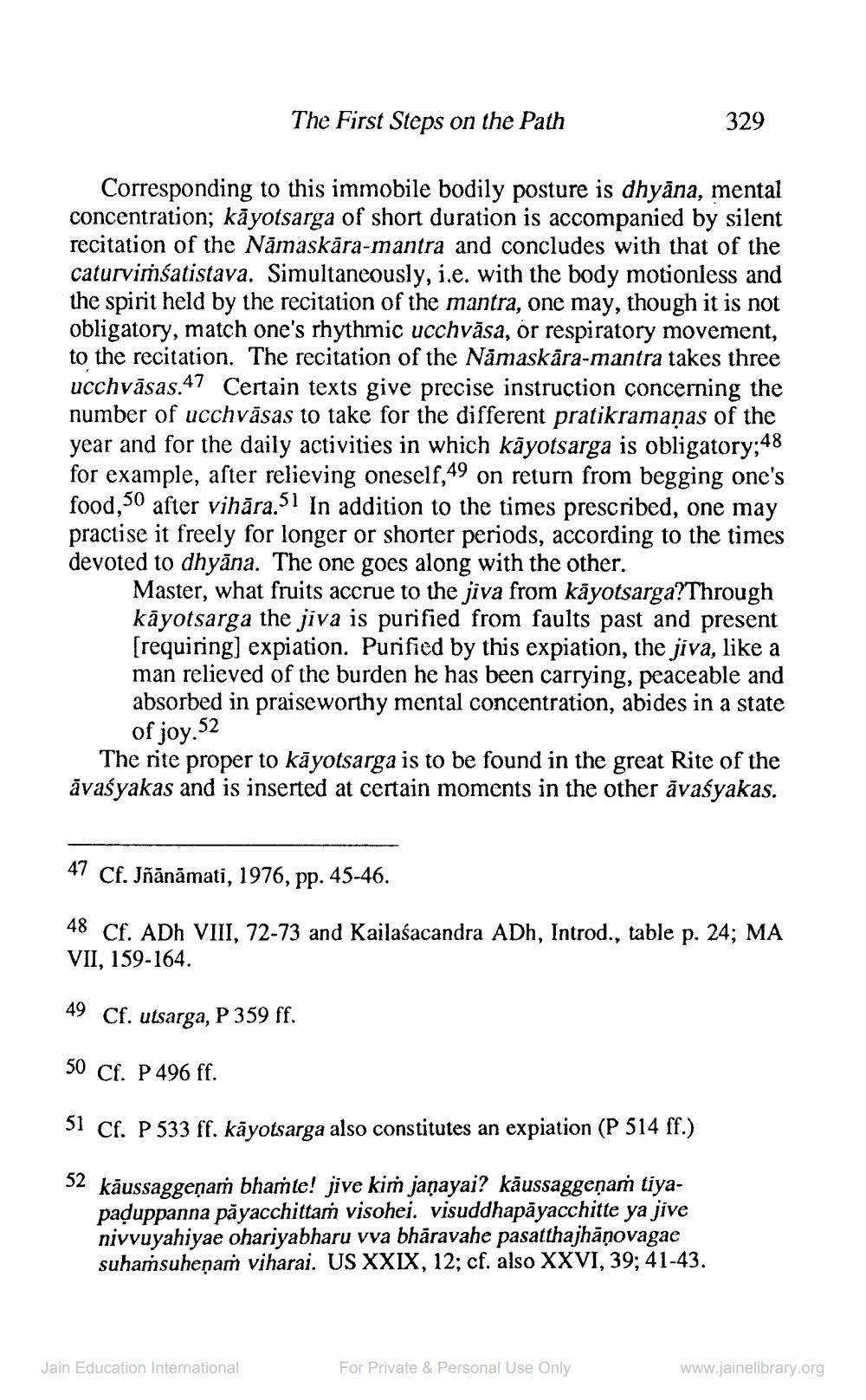________________
The First Steps on the Path
329
Corresponding to this immobile bodily posture is dhyāna, mental concentration; kāyotsarga of short duration is accompanied by silent recitation of the Nāmaskāra-mantra and concludes with that of the caturvimśatistava. Simultaneously, i.e. with the body motionless and the spirit held by the recitation of the mantra, one may, though it is not obligatory, match one's rhythmic ucсhvāsa, or respiratory movement, to the recitation. The recitation of the Namaskara-mantra takes three ucchvāsas.47 Certain texts give precise instruction concerning the number of ucсhvāsas to take for the different pratikramaņas of the year and for the daily activities in which kāyotsarga is obligatory;48 for example, after relieving oneself,49 on return from begging one's food,50 after vihāra.51 In addition to the times prescribed, one may practise it freely for longer or shorter periods, according to the times devoted to dhyāna. The one goes along with the other.
Master, what fruits accrue to the jiva from kāyotsarga?Through kāyotsarga the jiva is purified from faults past and present [requiring] expiation. Purified by this expiation, the jiva, like a man relieved of the burden he has been carrying, peaceable and absorbed in praiseworthy mental concentration, abides in a state
of joy.52 The rite proper to kāyotsarga is to be found in the great Rite of the āvaśyakas and is inserted at certain moments in the other avaśyakas.
47 Cf. Jñānāmati, 1976, pp. 45-46.
48 Cf. ADH VIII, 72-73 and Kailasacandra ADh, Introd., table p. 24; MA VII, 159-164.
49 Cf. utsarga, P 359 ff.
50 Cf. P 496 ff.
51 Cf. P 533 ff. kāyotsarga also constitutes an expiation (P 514 ff.)
32 kaussaggeņas bhaṁte! jive kim janayai? kāussaggeņaṁ tiya
paļuppanna pāyacchittas visohei. visuddhapāyacchitte ya jive nivvuyahiyae ohariyabharu vya bhāravahe pasatthajhāņovagae suhamsuhenam viharai. US XXIX, 12; cf. also XXVI, 39; 41-43.
Jain Education International
For Private & Personal Use Only
www.jainelibrary.org




